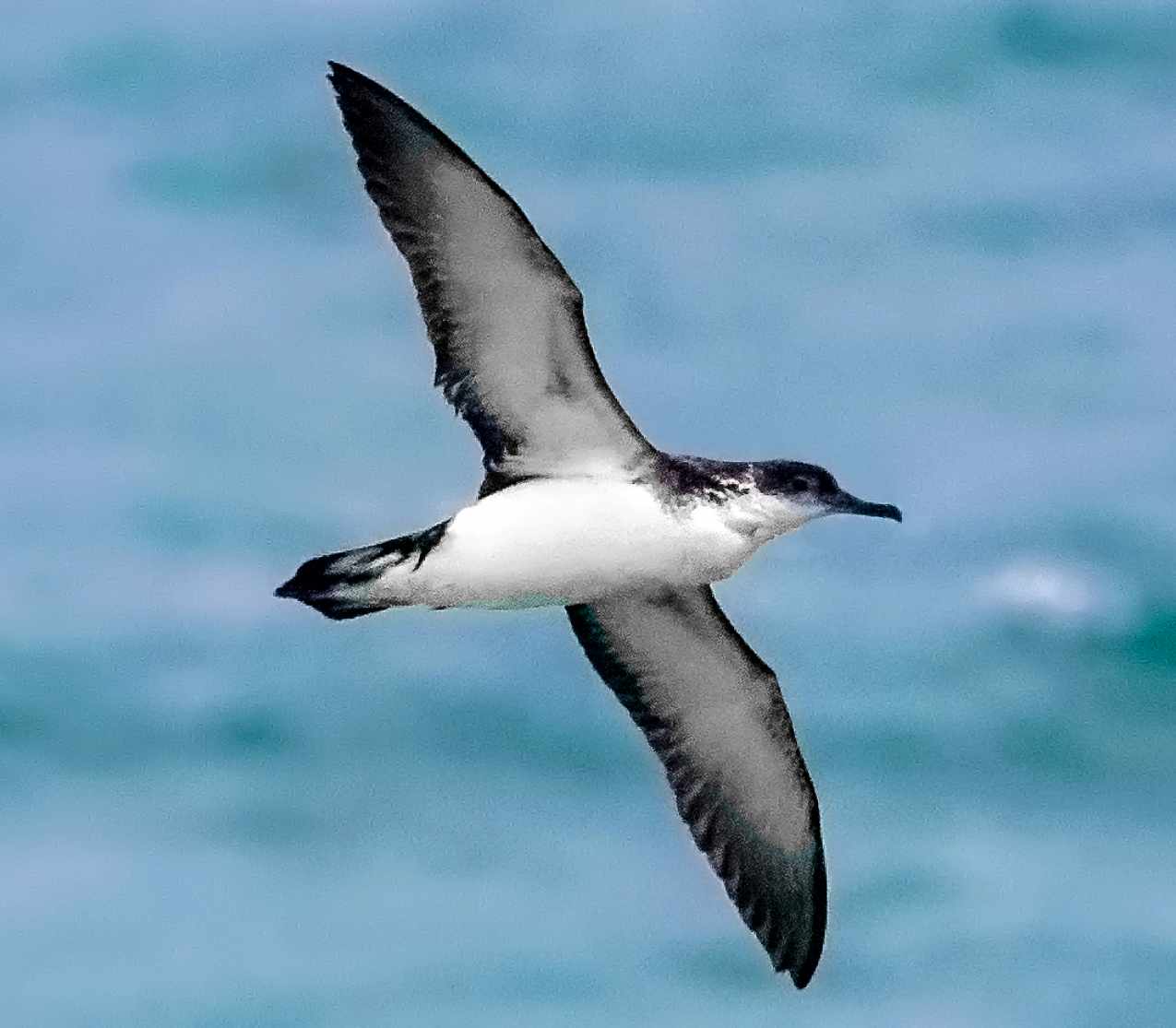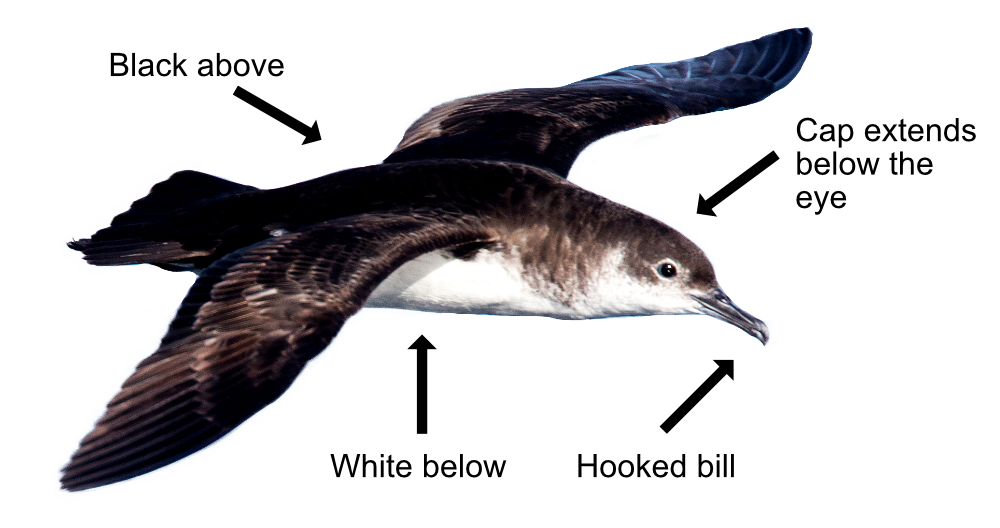
The Manx Shearwater, apart from having a cool name, is a bird of the open ocean, only coming ashore to nest and, even then, only after dark. They are clumsy and vulnerable on land, so darkness saves them from predators. Vikings in long boats heard the weird calls of this little bird and thought they were evil spirits. They travel thousands of miles every year to nest in their hobbit-like burrows and raise one super fluffy chick between March and July.
The Manx Shearwater is black above and white below, has a small head with a black cap extending below the eye, a long slim dark hooked bill, and a white underwing with a dark border. They fly with rapid beats of their stiff wings and long glides close to the waves, often flying in a straight line and flashing black and white as they turn. They make 'wheezy chicken' howls and screams from their burrows at night as they tell ghost stories.

They feed alone or in small flocks on fish and other marine creatures, which they take from the surface or by shallow dives. More of a duck-like snorkelling bird than the scuba diving Guillemot or the torpedo Gannet. Their favourite food includes herrings, sardines, sprats and squid. They have an extremely sensitive sense of smell and can detect fish many miles away.
The Manx Shearwater nests in old rabbit or Puffin burrows on isolated islands, in large colonies - often numbering in the thousands. The single white egg is incubated by mum and dad taking it in turns to sit for 6 days before swapping over. They need the time to travel to offshore feeding grounds which can be as far as 900 miles away. The egg hatches after a long 51 days and the young chick is fed on pre-digested food. After 60 days, mum and dad eventually tire of feeding the huge youngster and putting up with its messy bedroom, abandoning it to sort its life out and lose a bit of weight so it can fit through the door. The youngster gets the hint and leaves the burrow 8 or 9 days later after a crash diet. It then starts a long journey to winter in South America! The youngster will not breed until it is 5 years old, though a Manx Shearwater can live to an amazing 50 years old.
They are the most common shearwater seen in Britain, mainly on our western coasts. About 300,000 pairs breed here, 80% of the world's population. Their numbers are thought to be stable but the Manx Shearwater is difficult to survey accurately - being at sea during the day and in their burrows at night. Many of the offshore islands they use are now protected. In 2008, a Manx Shearwater that nested on Bardsey Island in Wales was more than 50 years old and estimated to have flown about 5 million miles in its lifetime.
Their Latin name is 'puffinus puffinus' where 'puffinus' derives from 'puffin' which referred to the cured carcass of a Shearwater, a former delicacy. The term however switched and came to be used for the Atlantic Puffin. The English name is from the 'shearing' way they fly and a nest site on the Isle of Man, hence 'Manx Shearwater'. Local names include 'Devil Bird' from the eerie howls and shrieks they make at night. Shearwaters are 'tubenoses', a bird group that includes Fulmars and Storm Petrels.